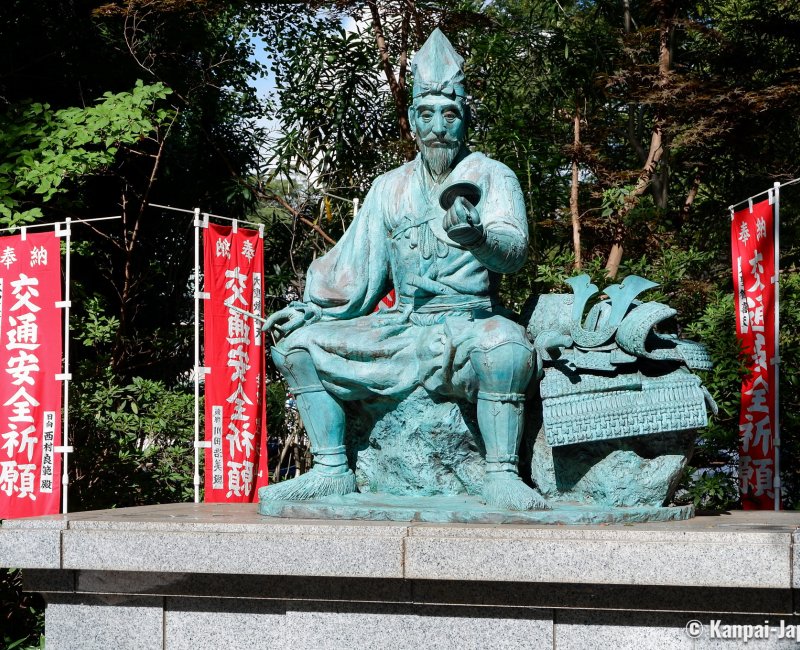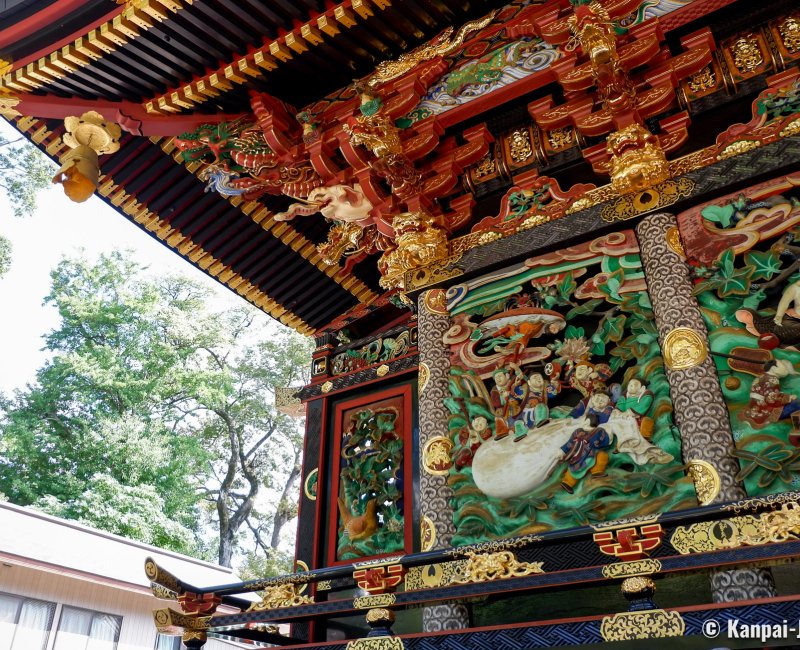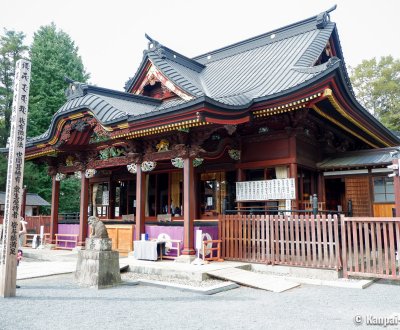Menuma Shodenzan Kangi-in
The Small Nikko in Saitama
Menuma Shodenzan Kangi-in is a Buddhist temple located in Kumagaya City, at the northernmost end of Saitama prefecture in Japan. The richly ornamented facades of its main pavilion remind of the famous Toshogu mausoleum thus earning it the nickname of "Saitama’s Nikko."
Menuma Shodenzan Kangi-in temple’s was founded in 1179, when Sanemori Saito (1111 - 1183) a local samurai lord had a temple built to honor Shoden, a deity of the Japanese esoteric Buddhism of the Shingon School. Often pictured with an elephant head on a human body, Shoden is venerated in Japan as the guardian of good fortune and protector against evil.
The spiritual site’s main entrance is marked by the great Kisoumon gate, standing 16 meters high and bearing a double roof. Entirely made of carved wood, it was erected in 1851 by master carpenter Hayashi Masamichi and it is sheltering 2 of the 4 Heavenly Kings: Bishamonten, the guardian of the north and Jikokuten, guarding the East. After passing the gate, continue on the central path, on the side of which a beautiful statue of lord Sanemori awaits. Then, you’ll cross the 2nd gate, home to the Niô guardians and last rebuilt in 1894, but whose guardian statues are the originals made in 1658.

Main pavilion designated National Treasure of Japan
The true gem of the temple, the main hall hondo was built in the byogata-shiki gongen-zukuri architectural style, characterized by the connection of all the pavilions together to create a whole unit. It was designed by Hayashi Hyogo Masakiyo, a crafstman originating from Menuma and descendant of a carpenters’ family who worked for the Tokugawa shogunate. Therefore, his skills and inspirations are similar to those used in Nikko’s Toshogu.
With a rich and colorful ornamentation, the facades of the main inner pavilion feature the aesthetics of the yatsunume-zukuri style. The beautiful and very detailed carving represent scenes of the Azuchi-Momoyama period (1573 – 1603) as well as ancient rituals introduced from China. A sculpture is showing an eagle saving a monkey 🐒 from drowning into a river: it is assumed the monkey symbolizes the lively and reckless behavior of humans with the eagle being sent by the deity Shoden coming to help the macaque as the god would for humans.
Spreading on a quite large superficies, the grounds also shelters less prominent constructions such as a bell tower, a tahoto peace pagoda and Daishido pavilion, mostly known as the last temple of the Kanto 88 temples pilgrimage (関東八十八ヵ所霊場).

Menuma Shodenzan Kangi-in’s is quite far from Tokyo and even from the large Saitama city, but its visit can be easily combined with the discovery of Kodai Hasu no Sato, the ancient lotus village located in the neighboring Gyoda city. Its 14-hectares’ park is home to nearly 100,000 ancient lotus called gyoda hasu, as well as of about 40 other species blooming from mid-June to early August. From June to October, the rice fields of the surroundings are used to display patterns that change every year, and can be viewed from a 50-meters high observation tower.


